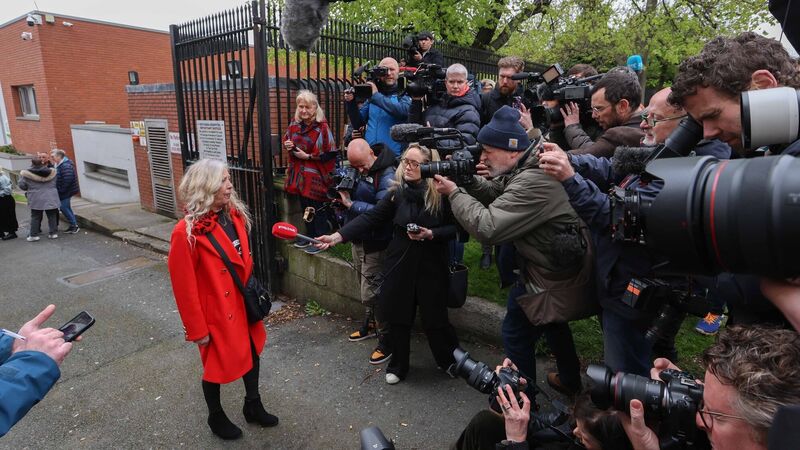Terry Prone: The day the truth burst, after 43 years of constant suffering for the Stardust families

Antoinette Keegan at the Dublin District Coroner's Court after the Stardust Inquests jury delivered verdicts of unlawful killing in the case of all 48 victims who died in the fire. Photo: Sasko Lazarov Farrell / © RollingNews.ie
A dreary hotel room. Eleven days after the Stardust fire. Parents. Grandparents. Sisters. Brothers. Arriving for a meeting I had been asked to facilitate.
They later became a forceful and relentless group, but that afternoon, they were individuals with nothing in common but agony. Some were angry. Some were trying to mind a weeping parent. Some had their pain muffled by GP-administered Valium. One or two of the older ones had self-anaesthetised using alcohol.
There was not a hope of a shared set of objectives coming out of the meeting. One thing that was clear was that — even back then before social media — some of the smart siblings of dead teenagers and 20-year-olds had an acute sense of the need to blame.
They named people without fear, since they were in private session and even if journalists had been present, none of them in their right mind would print or broadcast the accusations.
What began to emerge from the scattered contributions was an awareness that the horror required accountability. It was a kind of natural process.
Matching that awareness was an eerily prescient understanding that if the people being named and blamed in the meeting didn’t get nailed, blame would shift and fasten on to their dead brothers, sisters and friends. As it did.
Not because those blamed in that meeting fed media with possibilities, but because location of the bodies led to wild supposition: “Maybe this one had been smoking and thrown away a butt that was still alight.”
Long before the phrase “urban legend” was common currency, and long before the internet could have facilitated conspiracy theories, conspiracy theories grew around the Stardust story like weeds, along with the myths about entrepreneurial unnamed heroes who hijacked trucks and drove them through the chains locking a particular entrance.
The relatives at the hotel meeting shared the myths and the suspicions and the conviction that whoever else might have caused the fire, their dead relative would never have done so. However, they also shared a baffled conviction that, because they could not hire high-level lawyers, they and theirs would lose out.
They shouted at each other and at me. They cried. Looked silently into space. None of them tackled the Milky Mints in ordered bowls down the table. Treats were far outside their compass, that day. I had been given — I know not by whom — lists of grief counsellors with their contact points attached.
As the meeting broke up, having — within the normal expectations of a facilitated crisis meeting — achieved the sum total of nothing at all, they came up to write down the names. One half of my brain cursed that we hadn’t thought of business cards. The other half noted that the very fact of having to write details down on scraps of paper seemed in some strange way to briefly distract participants from the central agony.
As did hugging the facilitator and crying in the arms of someone they would never see again, in the unquestioning intimacy and trust that happens when the unimaginable wipes away the normal.
Watching them exit in miserably separate groups, nobody could have guessed that they would turn into such an inexorable, implacable, unappeasable force for truth. It became yesterday’s story. Then it became last year’s story. Last decade’s.
To people born long after the dolled-up kids died in the big dancehall, the very name “Stardust” spoke of something irrelevant to their lives. But to some people alive when the horror happened, the unforgiving campaign of the relatives was something to be nodded at — but moved on from.
What the campaign did was a case study in public influence. Every one of the campaigners effectively emulated Zola in his “J’Accuse” letter about Dreyfus and — eventually — stopped Ireland in its tracks, made an Attorney General change a longstanding Government position and resulted in a year-long inquest which revived the ghastly event for those alive at the time and rendered wide-eyed those who were not.
Zola wrote in that famous letter: “When we shut up the truth underground, it accumulates there, it takes on such a force of explosion that, the day it bursts, it blows everything up with it.”
On Thursday the truth burst, blowing everything up with it. After nearly half a century of defeat, postponement and constant suffering, the relatives heard their beloved dead named and personalised.
But what changed everything was the majority verdict, applied to every single victim. Unlawful killing.
They had always known. Now they had proven it to everybody.

















